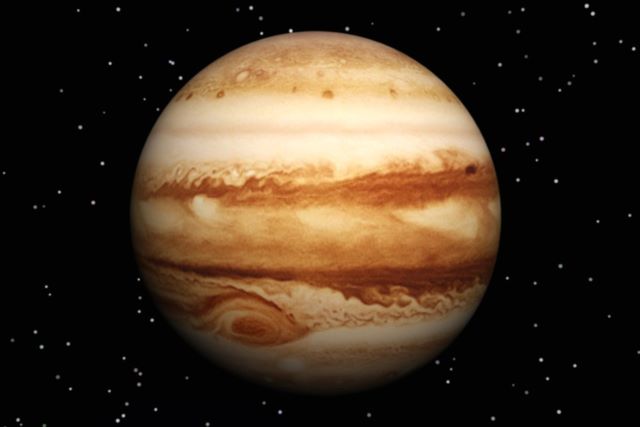Washington – New analysis of telescope data shows a dwarf star just 40 light years from Earth has at least seven apparently rocky planets with potential to harbour water, an international team of scientists announced Wednesday.
“Looking for life elsewhere, this system is probably our best bet as of today,” said Brice-Olivier Demory, professor at the University of Bern’s Centre for Space and Habitability and one of the authors of a paper on the planets around TRAPPIST-1, a small, ultracool star.
The discovery of the planets, which are all about the size of Earth or smaller, was announced at NASA headquarters in Washington and published in the journal Nature.
 An artist’s rendition on what a planet could look like around TRAPPIST-1, a small, ultra-cool star. Seven planets that orbit it are the “best bet” for life outside Earth. Photo illustration: NASA Photo: Nasa/dpa
An artist’s rendition on what a planet could look like around TRAPPIST-1, a small, ultra-cool star. Seven planets that orbit it are the “best bet” for life outside Earth. Photo illustration: NASA Photo: Nasa/dpa
The TRAPPIST-1’s planets are similar to the inner solar system around Earth’s sun, Demory’s analysis of data from NASA’s Spitzer Space Telescope showed.
Like previous exoplanets – or planets beyond Earth’s solar system – TRAPPIST-1’s satellites were spotted when astronomers saw the planets “transit” the star, blocking some of the light captured by telescopes.
“This discovery could be a significant piece in the puzzle of finding habitable environments, places that are conducive to life,” said Thomas Zurbuchen, associate administrator of NASA’s Science Mission Directorate. “Answering the question ‘are we alone’ is a top science priority, and finding so many planets like these for the first time in the habitable zone is a remarkable step forward toward that goal.”
All seven planets are in orbits even closer than Mercury, the sun’s nearest planet, causing frequent transits and plentiful opportunities for observation and collection of data.
But because TRAPPIST-1 is so small and cool – about one-tenth the size and half the temperature of the sun – at least three of the planets could be cool enough for water and, possibly, life, despite their tight orbits. They fall clearly within the so-called habitable zone.
Further data used in the Nature paper was collected from several ground telescopes around the world.
Demory said that future telescopes, including the James Webb Space Telescope, which is to succeed the orbiting Hubble Space Telescope, “will have the possibility to detect the signature of ozone if this molecule is present in the atmosphere of one of these planets.”
He said that ozone “could be an indicator for biological activity on the planet,” but cautioned that signs of life are difficult to assert from interstellar distances.
-dpa










